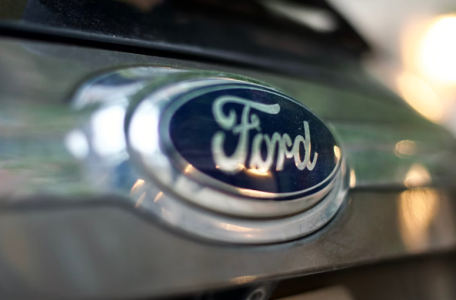Best-selling car in America recalled after safety failure sparks concern
- Replies 0
The most widely driven truck in America has once again found itself caught in the middle of a growing safety concern that has captured national attention.
An issue tied to a critical part of the vehicle has pushed the automaker to respond quickly with measures they say are necessary and unavoidable.
Countless drivers are now being cautioned that their trucks may face unexpected problems that could arise without warning.
While the company emphasizes that no accidents have been reported so far, the scale and reach of the recall make it clear just how serious the situation has become.
A total of 355,000 trucks are being recalled across the United States due to concerns with the instrument panel cluster, the digital display located behind the steering wheel. This screen is responsible for critical functions such as showing speed, navigation, and fuel levels.
Owners have reported that the screen can fail to operate properly when the engine is started, sometimes going completely blank. Officials say that nearly 100 drivers have experienced this malfunction so far.
The recall covers 278,000 of the automaker’s 2025 pickup trucks, along with 77,000 of its larger 2025 and 2026 models, including the F-250 SD, F-350 SD, F-450 SD, and F-550 SD.
The National Highway Traffic Safety Administration confirmed the bulletin but stated that it was not aware of any collisions caused by the issue.

The company also told reporters that no crashes have been linked to the malfunction. Instead of requiring customers to visit a dealership, the problem will be corrected through an over-the-air software update.
In many vehicles, the instrument cluster shows a branded sequence when starting the engine, such as a “built tough” display or a signature graphic.
Owners have noticed that after this introduction plays, the screen can suddenly go blank. This means that vital driving information is no longer visible, leaving drivers unaware of their speed or fuel status.
Because of the potential danger, the automaker chose to issue an urgent recall rather than delay action. This year has already set records for the company, and not in a positive way. In 2025 alone, it has announced 105 recalls, which is the highest number ever issued by a single brand in one year.
The five other automakers with the next-highest totals—Chrysler, Volkswagen, GM, Mercedes-Benz, and Honda—have collectively reported fewer recalls than Ford by comparison.
Also read: How the real price of your next car could be hiding in plain sight
The company has also led the nation in recalls in three of the past four years, highlighting an ongoing struggle with quality control. Problems this year have stretched across many systems, from engines and seatbelts to door latches and batteries.
Some issues involve loose electrical connections, while others involve faulty parts that can affect safety. Roughly half of the recalls were resolved through wireless updates, allowing owners to fix problems without stepping into a dealership.
Still, the company has been forced to spend billions of dollars annually to cover warranty and repair costs. Chief Executive Officer Jim Farley has been open about the company’s difficulties. In a 2024 earnings call, he explained that the automaker was spending nearly $4.8 billion each year on recalls alone.
To address the problem, he introduced a “build and hold” process that keeps new vehicles in storage lots for inspection before they are delivered to dealerships. Farley claimed that this approach already helped the company avoid 12 potential recalls, though it also temporarily reduced profits.
Around 77 percent of the company’s vehicles are manufactured in US plants, where operations have been upgraded with artificial intelligence and additional screening tools. These changes are meant to catch faulty parts before they are installed, reducing the risk of widespread problems.
Also read: Massive ford recall hits 850,000 Vehicles—hot weather could trigger dangerous failures
Despite these measures, some mechanics argue that workers are not being compensated enough to fully address the production issues. That concern has raised further questions about whether quality improvements can keep pace with the brand’s ambitious sales.
As one of America’s most recognizable brands, the company knows that public trust is essential. Recalls on such a massive scale put pressure on leadership to improve safety standards and prevent future issues.
Customers want reassurance that the trucks they rely on daily will not fail them at critical moments. With the latest recall still unfolding, many are waiting to see if the company can finally reverse the trend.
Read next: Who gets to ride in style? The inclusivity debate in luxury cars

Do you think automakers should be held more accountable for frequent recalls, especially when they affect best-selling vehicles? Have you or someone you know ever been caught in the middle of a recall? Share your thoughts in the comments below.
An issue tied to a critical part of the vehicle has pushed the automaker to respond quickly with measures they say are necessary and unavoidable.
Countless drivers are now being cautioned that their trucks may face unexpected problems that could arise without warning.
While the company emphasizes that no accidents have been reported so far, the scale and reach of the recall make it clear just how serious the situation has become.
A total of 355,000 trucks are being recalled across the United States due to concerns with the instrument panel cluster, the digital display located behind the steering wheel. This screen is responsible for critical functions such as showing speed, navigation, and fuel levels.
Owners have reported that the screen can fail to operate properly when the engine is started, sometimes going completely blank. Officials say that nearly 100 drivers have experienced this malfunction so far.
The recall covers 278,000 of the automaker’s 2025 pickup trucks, along with 77,000 of its larger 2025 and 2026 models, including the F-250 SD, F-350 SD, F-450 SD, and F-550 SD.
The National Highway Traffic Safety Administration confirmed the bulletin but stated that it was not aware of any collisions caused by the issue.

Best-selling car in America recalled after safety failure sparks concern. Image source: Dan Dennis / Unsplash
The company also told reporters that no crashes have been linked to the malfunction. Instead of requiring customers to visit a dealership, the problem will be corrected through an over-the-air software update.
In many vehicles, the instrument cluster shows a branded sequence when starting the engine, such as a “built tough” display or a signature graphic.
Owners have noticed that after this introduction plays, the screen can suddenly go blank. This means that vital driving information is no longer visible, leaving drivers unaware of their speed or fuel status.
Because of the potential danger, the automaker chose to issue an urgent recall rather than delay action. This year has already set records for the company, and not in a positive way. In 2025 alone, it has announced 105 recalls, which is the highest number ever issued by a single brand in one year.
The five other automakers with the next-highest totals—Chrysler, Volkswagen, GM, Mercedes-Benz, and Honda—have collectively reported fewer recalls than Ford by comparison.
Also read: How the real price of your next car could be hiding in plain sight
The company has also led the nation in recalls in three of the past four years, highlighting an ongoing struggle with quality control. Problems this year have stretched across many systems, from engines and seatbelts to door latches and batteries.
Some issues involve loose electrical connections, while others involve faulty parts that can affect safety. Roughly half of the recalls were resolved through wireless updates, allowing owners to fix problems without stepping into a dealership.
Still, the company has been forced to spend billions of dollars annually to cover warranty and repair costs. Chief Executive Officer Jim Farley has been open about the company’s difficulties. In a 2024 earnings call, he explained that the automaker was spending nearly $4.8 billion each year on recalls alone.
To address the problem, he introduced a “build and hold” process that keeps new vehicles in storage lots for inspection before they are delivered to dealerships. Farley claimed that this approach already helped the company avoid 12 potential recalls, though it also temporarily reduced profits.
Around 77 percent of the company’s vehicles are manufactured in US plants, where operations have been upgraded with artificial intelligence and additional screening tools. These changes are meant to catch faulty parts before they are installed, reducing the risk of widespread problems.
Also read: Massive ford recall hits 850,000 Vehicles—hot weather could trigger dangerous failures
Despite these measures, some mechanics argue that workers are not being compensated enough to fully address the production issues. That concern has raised further questions about whether quality improvements can keep pace with the brand’s ambitious sales.
As one of America’s most recognizable brands, the company knows that public trust is essential. Recalls on such a massive scale put pressure on leadership to improve safety standards and prevent future issues.
Customers want reassurance that the trucks they rely on daily will not fail them at critical moments. With the latest recall still unfolding, many are waiting to see if the company can finally reverse the trend.
Read next: Who gets to ride in style? The inclusivity debate in luxury cars
Key Takeaways
- Ford is recalling 355,000 trucks in the US, including 278,000 F-150s and 77,000 heavy-duty models, due to failures in the instrument panel cluster.
- Nearly 100 drivers have reported that their screens went blank, though neither Ford nor regulators have linked the issue to any crashes.
- This recall adds to a record-setting 105 bulletins already issued by the company in 2025, far more than any other automaker.
- CEO Jim Farley said Ford spends $4.8 billion annually on recalls and has implemented new inspection processes to prevent future problems, though questions remain about long-term improvements.






